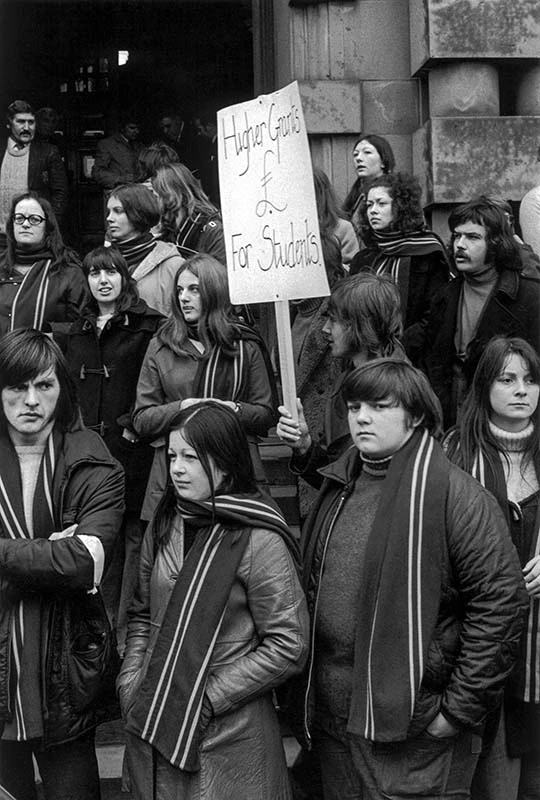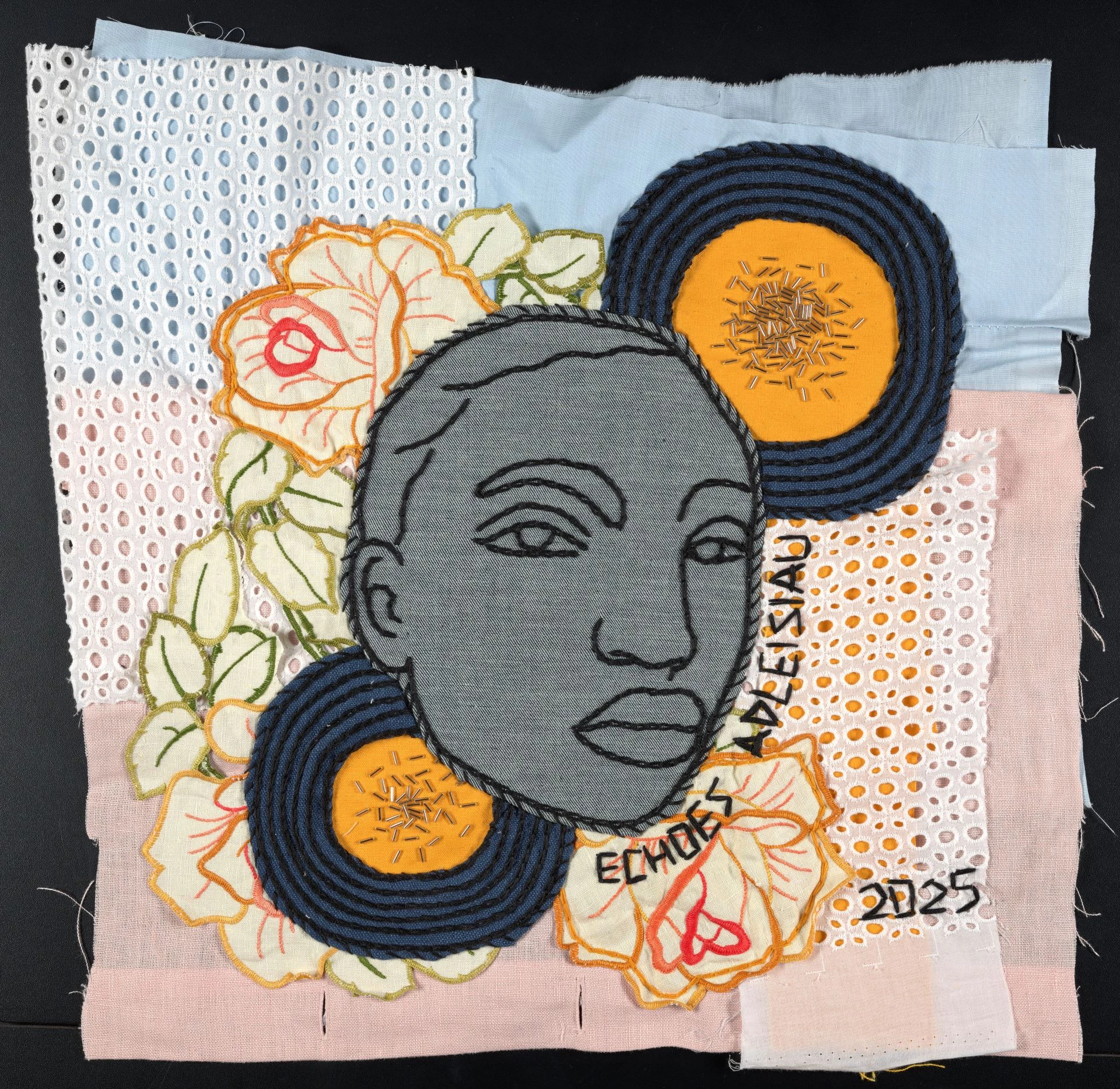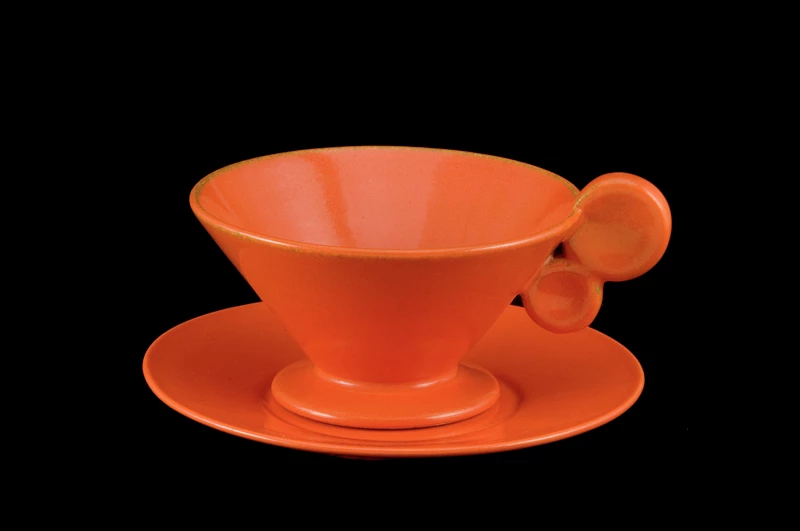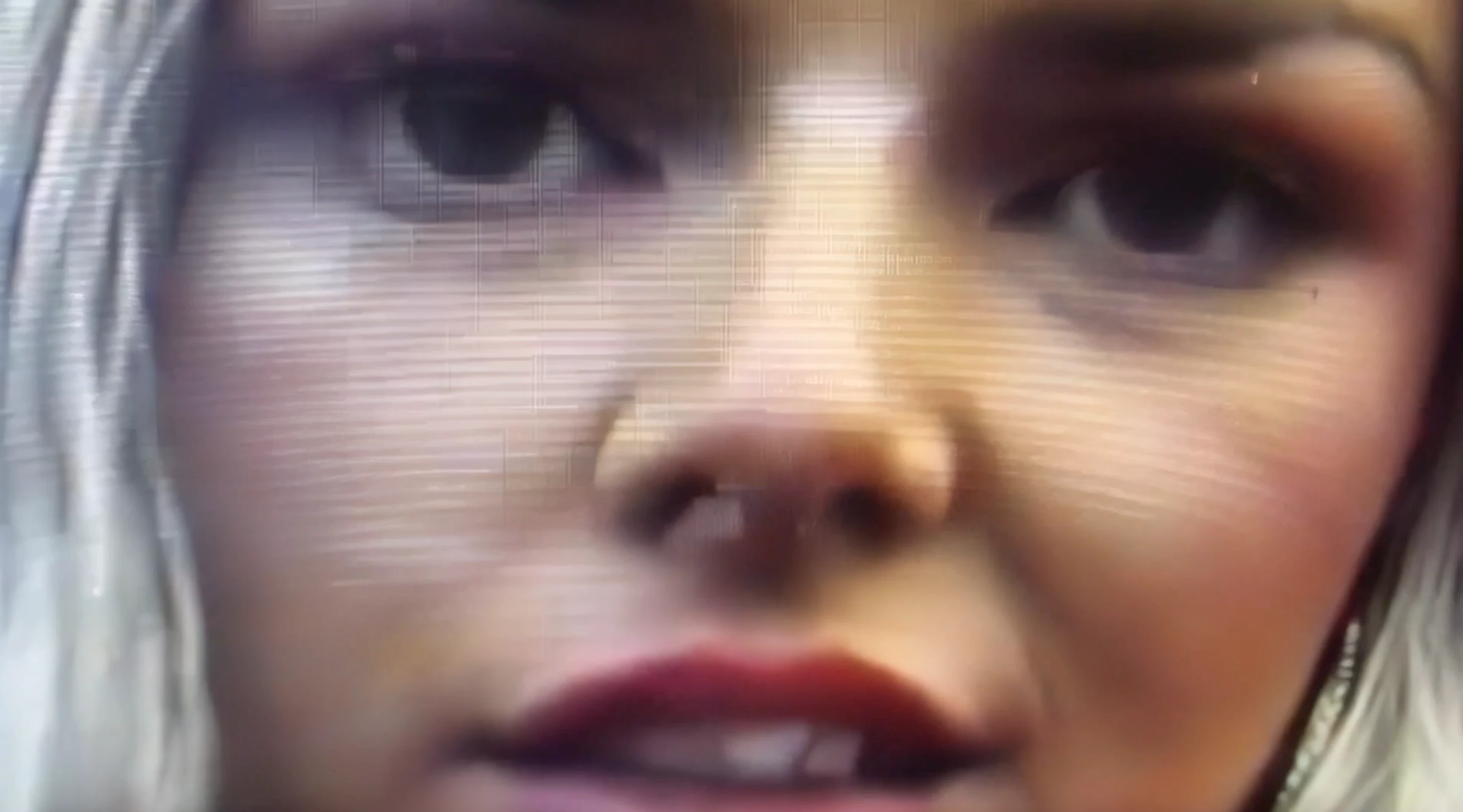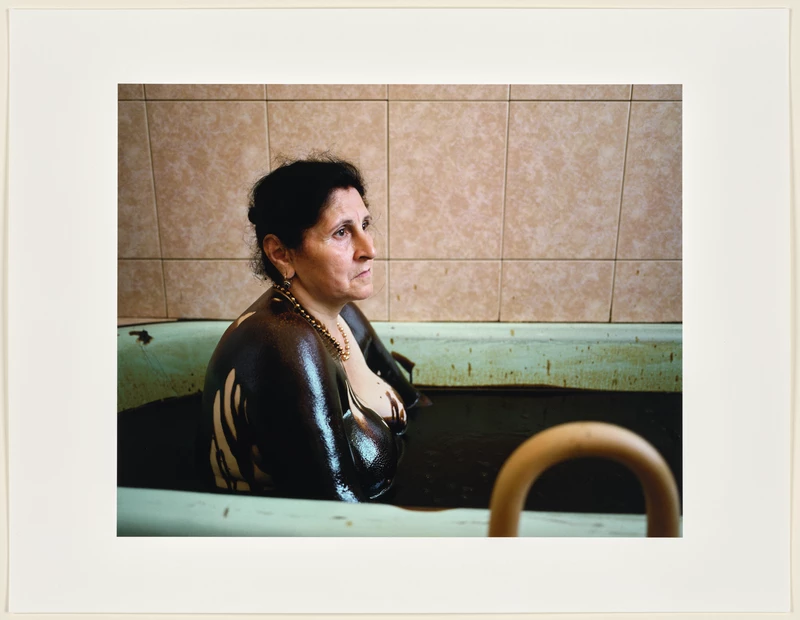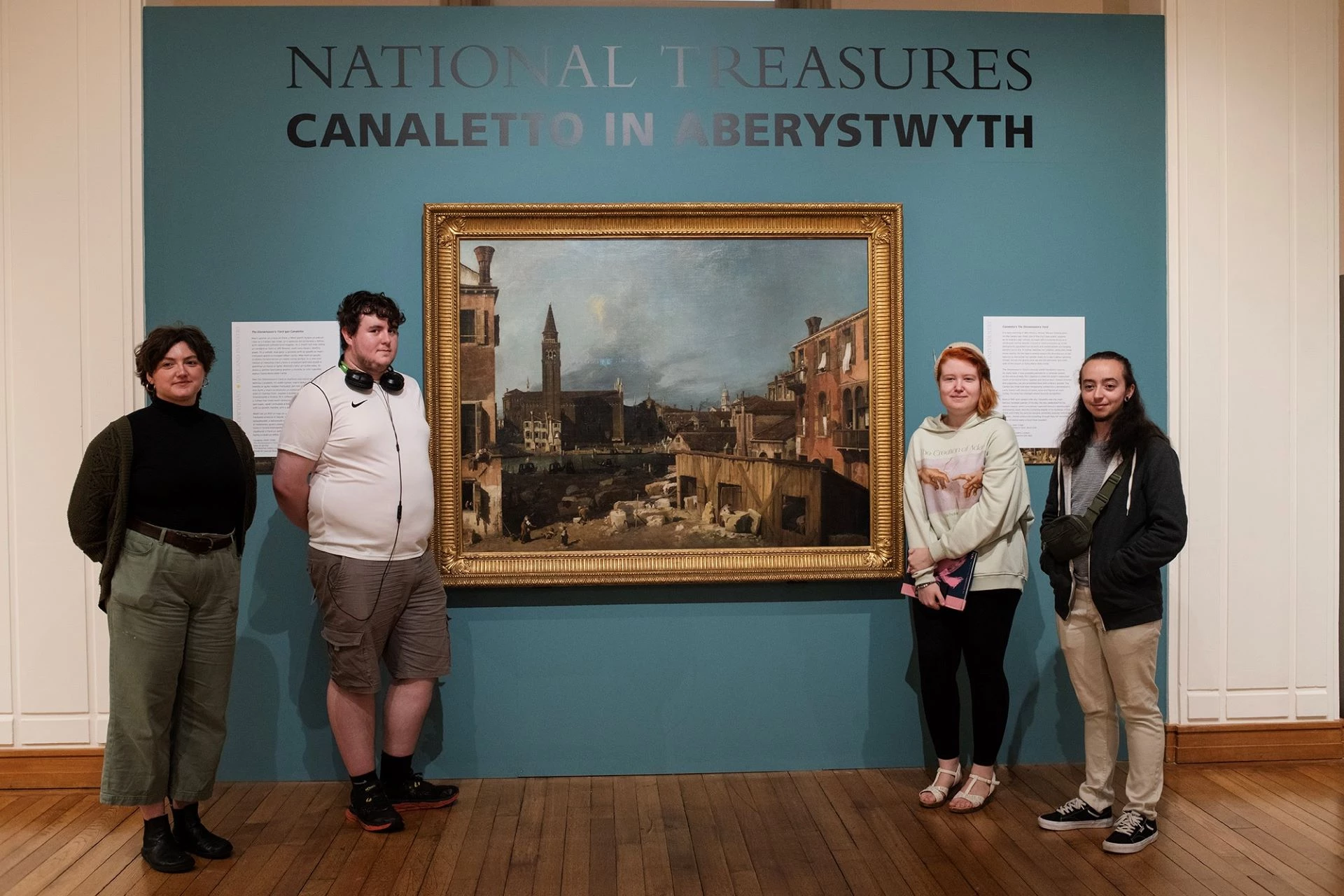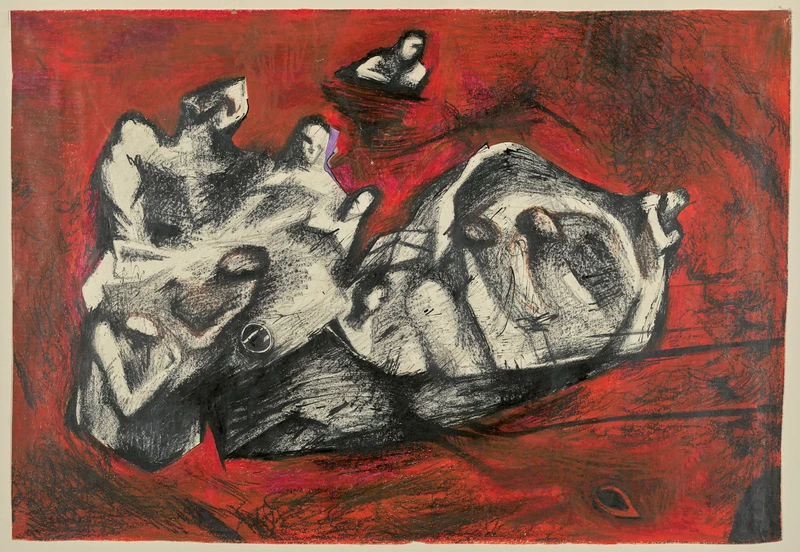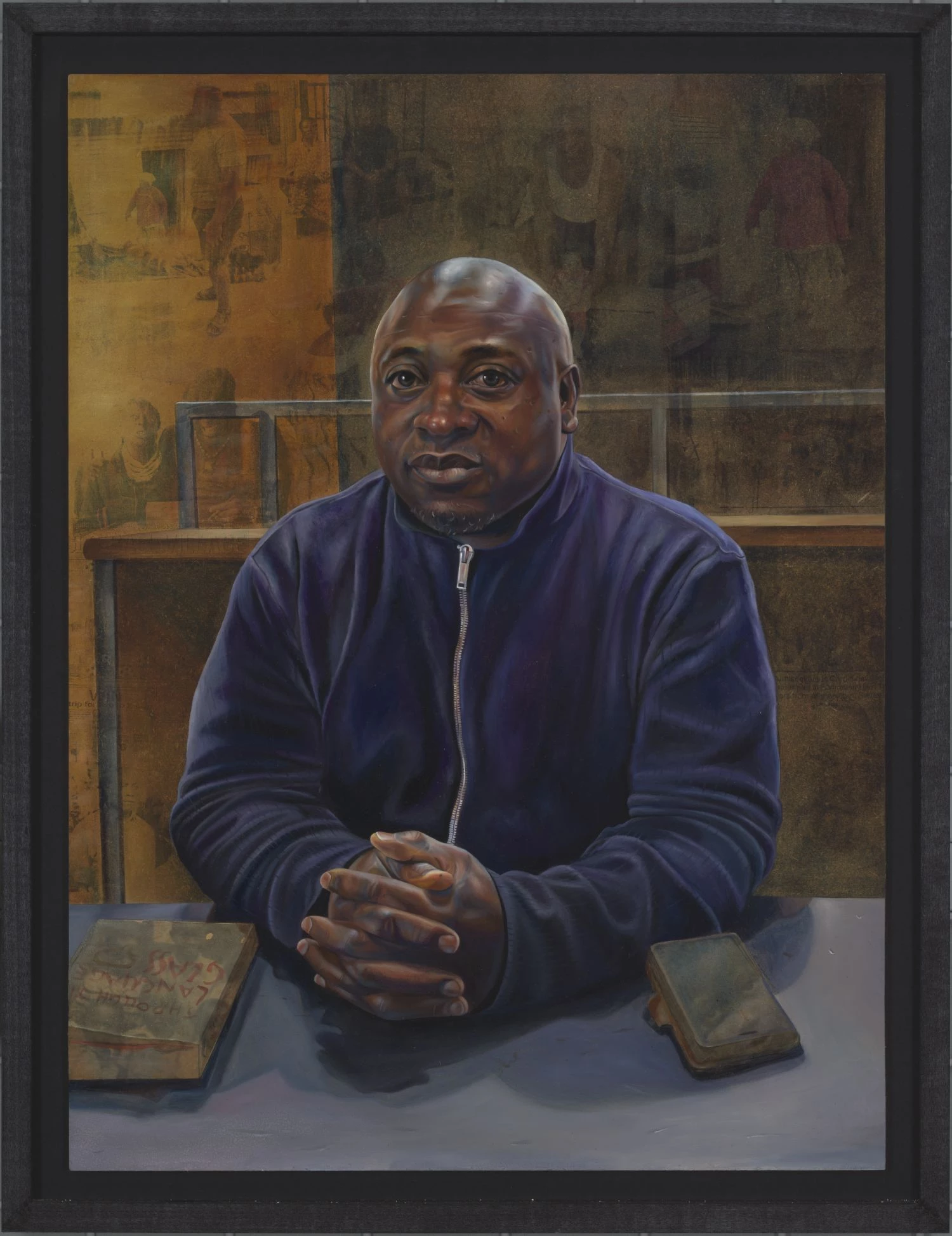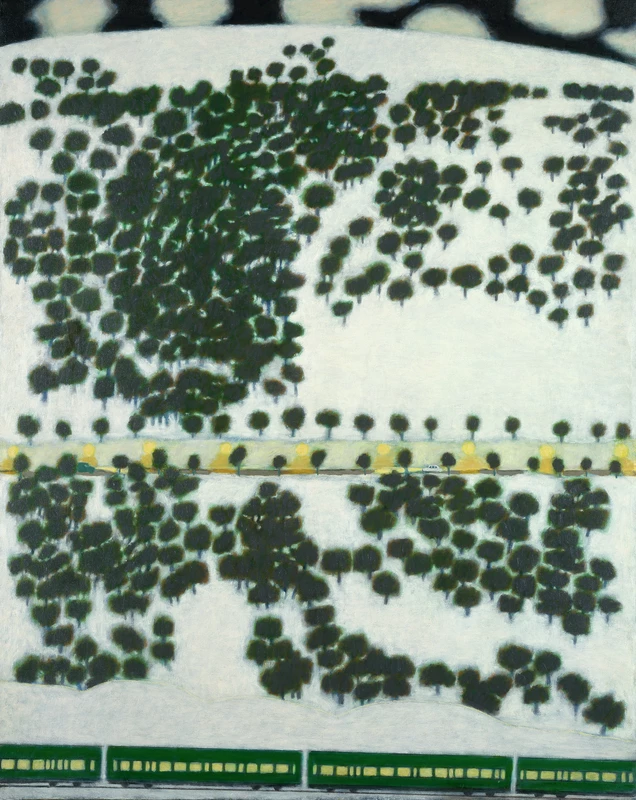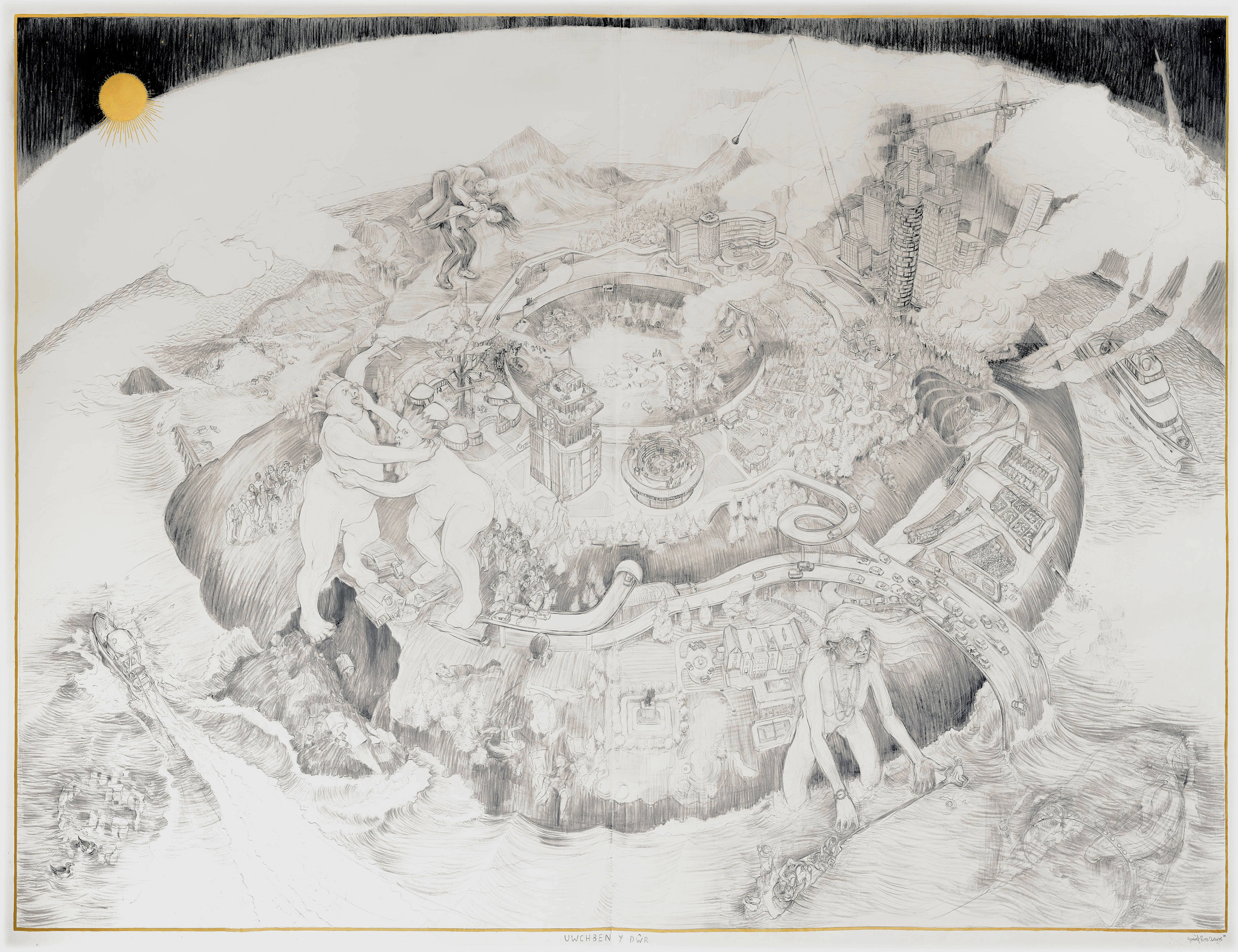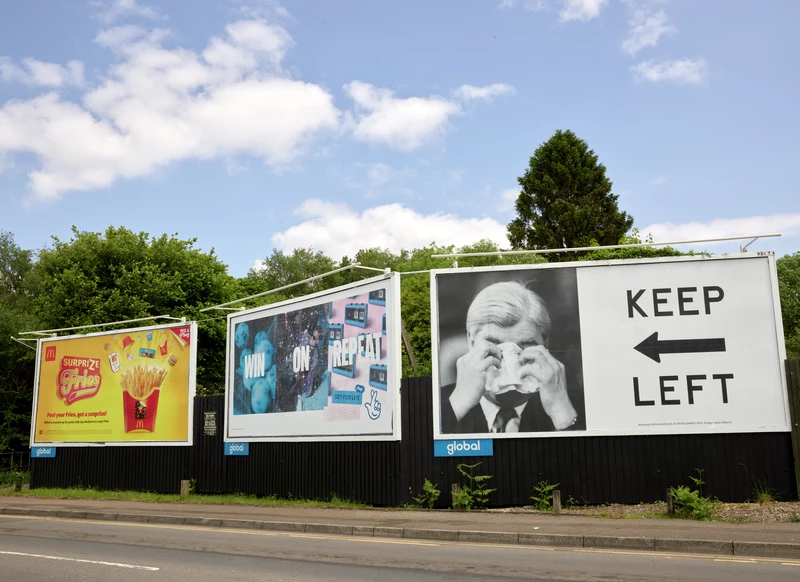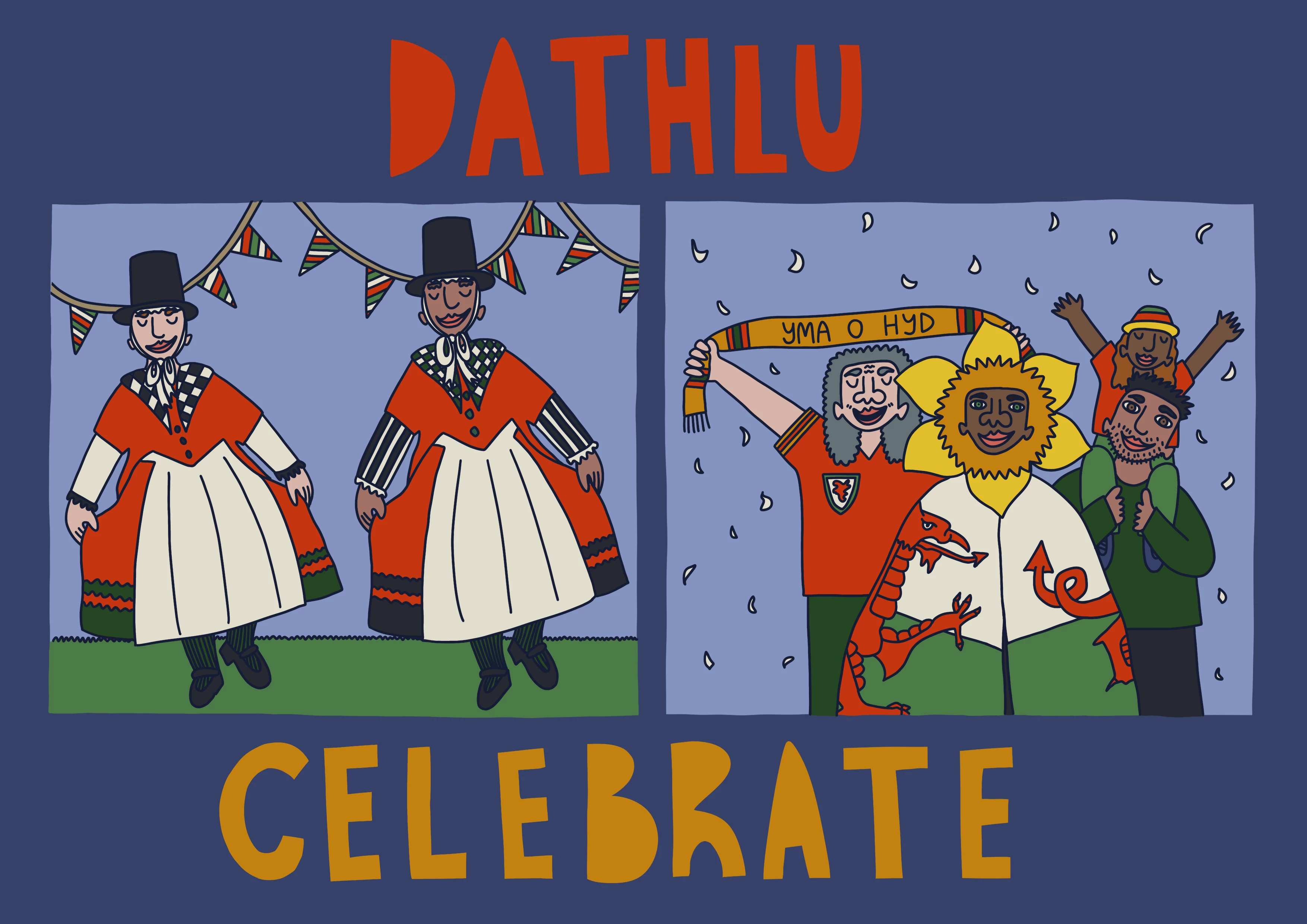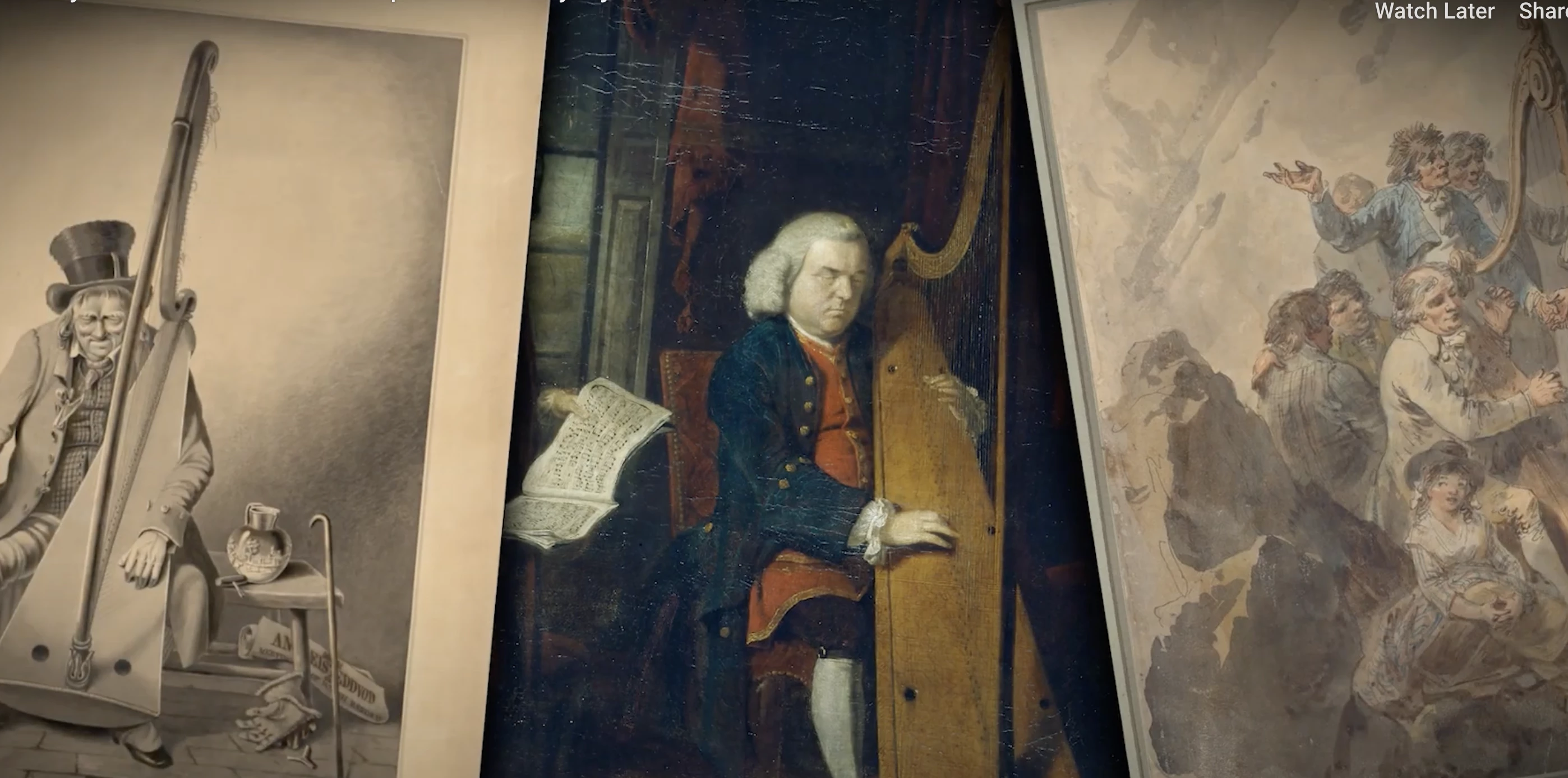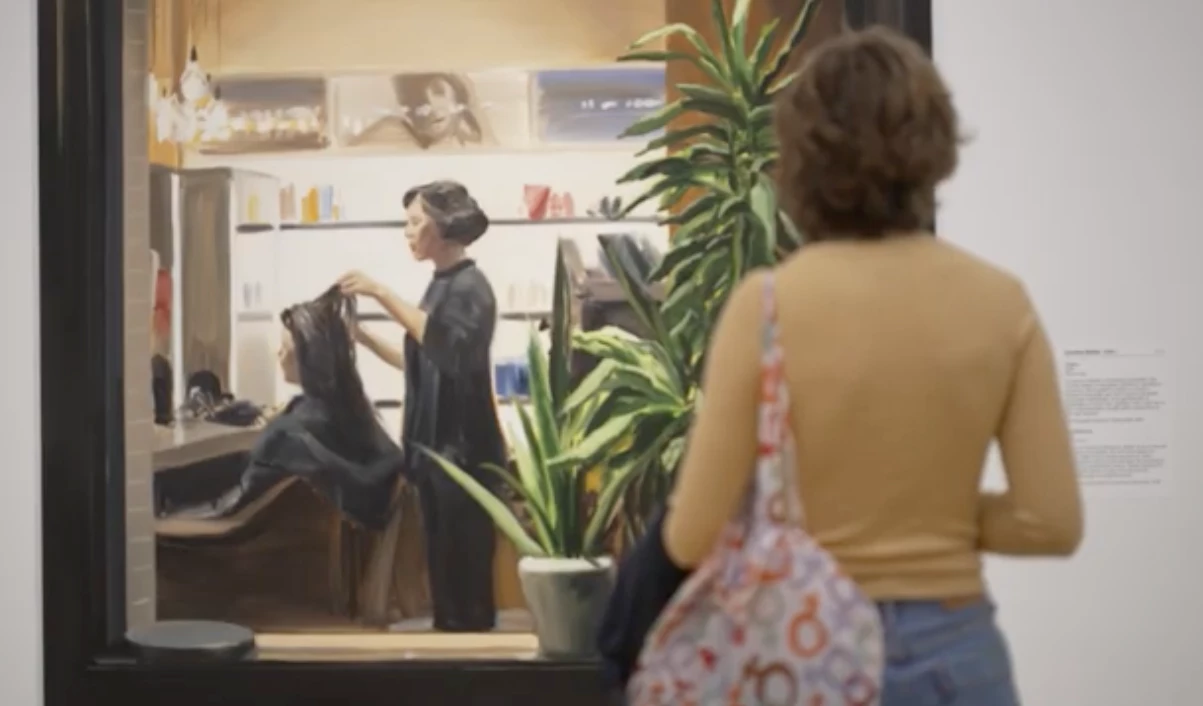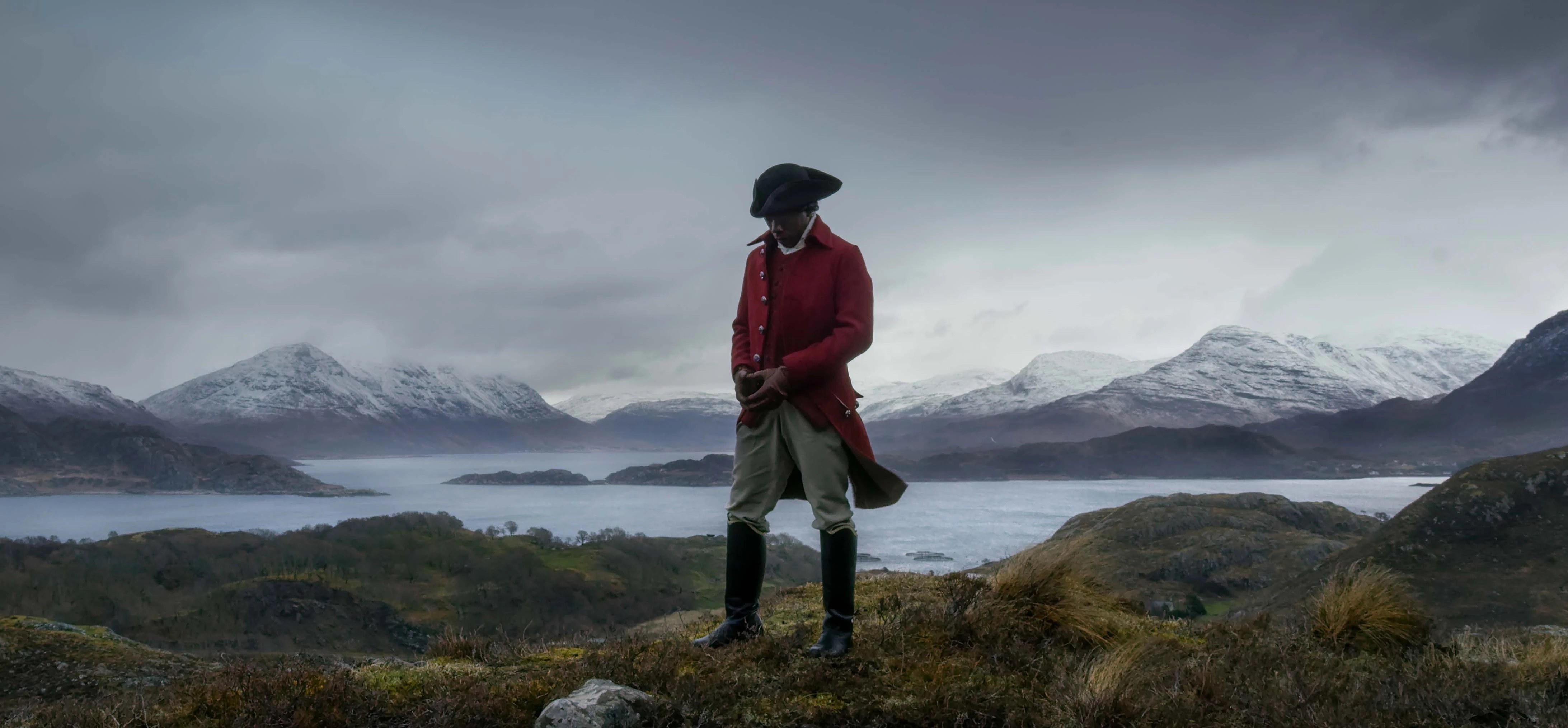According to research carried out by the National Museum of Women in the Arts,
“Only 13.7% of living artists represented by galleries in Europe and North America are women.”
Women artists have throughout art history been under-represented or not recognised in the same way as male artists, and so here we will ask the question of why and explore the work of some of the women artists in our collection.
Within this resource you will discover 5 women artists working across different mediums, learn about them, explore their work, and then come together to discuss their artwork as well as answer the broader question of why women artists have been under-represented and if that is changing today?
Mary Lloyd Jones
Mary Lloyd Jones is a landscape painter whose work engages with the area where she grew up. Her paintings address the multi-layered nature of our relationship with our natural environment and consider how land shapes identity through geography, history, culture and language.
Born in Devil’s Bridge in Ceredigion, Lloyd Jones studied at Cardiff College of Art for five years before embarking on a career as a teacher. She then spent three years in Romford in Essex before returning to Wales to live in the village of Aberarth on the west-Wales coast. There, her new surroundings reinvigorated her work.
Ceredigion features prominently in her work, in particular the scarring of the land by the centuries of lead mining in the area. She is likewise interested in the ancient marks that man has made deliberately on the landscape, such as the carvings of Barclodiad y Gawres and Bryn Celli Ddu on Anglesey. In her work, she often includes letters from the early Ogham and Bardic alphabets, intertwining them with natural forms. The Welsh language is also central to her work, along with her awareness of the symbiotic relationship between land and language.
As a woman artist, Lloyd Jones has spoken of the lack of role models as she grew in rural Wales. One important influence, however, was the Welsh quilt-making tradition, practiced by her female antecedents. While her early work incorporated textiles, she later turned exclusively to painting. Throughout her career, vibrant patches of colour have been a constant feature of her landscapes, which oscillate between figuration and abstraction.
Ray Howard-Jones
Ray (or Rosemary) Howard-Jones painted atmospheric landscapes of the coastline and islands of south Wales, mostly around Penarth and Pembrokeshire, and often in gouache. Her work was inspired by a deep, almost spiritual appreciation of nature, which follows in the Romantic landscape tradition.
Howard-Jones was born to Welsh parents in Berkshire but spent her childhood in Penarth with her grandparents. After attending school locally, in 1920 she went to the Slade School of Art in London, studying there for four years.
Still in London in her thirties, she had her first solo exhibition in 1935 but health problems stalled her career leading to a stint painting designs onto lampshades in a lamp factory. Returning to Penarth, she worked at the National Museum of Wales making archaeological drawings for publications. Later in her career she also produced medical illustrations.
Though not an official war artist, during the Second World War Howard-Jones was commissioned to paint the fortifications on the Bristol Channel Islands of Flat Holm and Steep Holm. She also captured boats in Penarth and Cardiff docks preparing to leave for the D-Day landings.
With her Penarth home damaged by bombs, Howard-Jones moved to London in 1947 but returned to Wales each summer. From 1948 to 1959, she and her partner, photographer Raymond Moore, served as summer caretaker at Skomer Island in Pembrokeshire where she painted some of her best-known works.
Also a muralist and mosaicist, in 1958 Howard-Jones won a national competition to produce a large-scale mosaic for the Western Mail offices in Cardiff. Entitled An Eye for the People, it was demolished in 2008. Her wide-ranging artistic activities reveal the challenges facing women artists in the mid-twentieth century, a fact also borne out by her chosen name, which did not reveal her gender.
Clémentine Schneidermann and Charlotte James
Clémentine Schneidermann and Charlotte James have pioneered projects that bring the language of global high-end fashion to the post-industrial communities of south Wales – in doing so, bringing different worlds together to encourage social engagement.
Schneidermann is a French photographer who moved to Wales to do an M.A. in Documentary Photography at the University of South Wales, where she has since completed a PhD. She specialises in social documentary photography with a particular interest in working within communities. James is a stylist from Merthyr Tydfil who gained a B.A. in Fashion Communication from the University of the West of England and has since worked as a creative director, fashion stylist and filmmaker in London and Wales.
The two women met while working on a community education project in the Valleys, which evolved into the collaboration ‘It’s called Ffasiwn’ (It’s called Fashion) in 2015. The project entailed teaching children and young teenagers about styling and design before taking photographs of them posing in fashionable outfits in local settings: for example, among the houses, in the streets or against hilly backdrops. Combining documentary photography with fashion, performance, landscape and portraiture, the resulting images have a surreal and unexpected twist. The subjects are always cast in a positive light, conveying the message that we can all be what we want regardless of circumstances. By challenging stereotypes, their images are both empowering for the subjects and compelling for viewers. The project is ongoing, with the young subjects continuing to be photographed as they grow older.
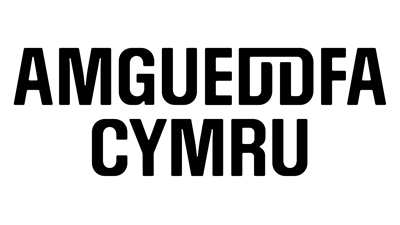


Magdalene Odundo
Magdalene Odundo DBE is an internationally renowned figure in the world of ceramics, as well as Chancellor at the University for the Creative Arts and recipient of the African Heritage Outstanding Achievement in the Arts award in 2012.
Born in Kenya in 1950, Odundo was taught in the British colonial education system in India and Kenya before working in an advertising company and studying commercial design at Kabete National Polytechnic, Nairobi. In 1971 she moved to Britain to study at Cambridge School of Art. Here she was inspired to take up ceramics by Cambridge’s museum collections and by her tutor Zoë Ellison, born in Zimbabwe but trained at the Ewenny Pottery near Bridgend.
In 1974-1975 Odundo studied African pottery techniques in Nigeria and Kenya, and adopted hand-building as her main technique. Meticulous burnishing and the traditional Ugandan firing technique called emsubi give her vessels their distinctive appearance.
Odundo went on to study at West Surrey College of Art and Design and the Royal College of Art. Her first public museum solo exhibition was curated by the Glynn Vivian Art Gallery, Swansea, in 1987, which for her ‘was very pivotal in setting the path for my practice.’
Odundo does not define herself as an ‘African artist’, drawing on a wide range of global influences, including sculpture and dance as well as ancient and historic ceramics from Africa, pre-Hispanic America, Asia, Greece and Egypt.
Rachel Whiteread
Rachel Whiteread (b. 1963) makes small and large-scale sculptures by casting the empty space around ordinary household objects. For example, she has made solid casts of the space underneath chairs, inside wardrobes, underneath staircases, around books in a bookcase and even the inside of a hot water bottle.
Her casts are made when a liquid material, like plaster, concrete or resin, is poured into a mould and left to solidify – turning the air inside into a solid object.
In 1993, Whiteread was the first woman to be awarded the prestigious Turner Prize for her project Untitled (House). For this work, she created a concrete cast of an entire three-storey terraced house in the East End of London, transforming what was once a family home into a strange and solid object. This huge sculpture took three months to complete and was demolished by the council shortly afterwards.
Whiteread’s sculptures are at the same time familiar and mysterious. They relate to domestic objects and spaces but present them in a way that we are not used to, making the invisible visible.
The Facts
"In the U.K., 64% of undergraduates and 65% of postgraduates in creative arts and design are women, but 68% of the artists represented at top London commercial galleries are men." - Freelands Foundation
"Only 13.7% of living artists represented by galleries in Europe and North America are women."
"In 2017, 27 per cent of living contemporary artists in the Tate Collection are women"
"More than $196.6 billion has been spent on art at auction between 2008 and the first half of 2019. Of this, work made by women accounts for just $4 billion—around 2 percent." - "Female Artists Represent Just 2 Percent of the Market. Here’s Why—and How That Can Change," artnet News
"Of the 3,050 galleries in the Artsy database, 10% represent not a single woman artist, while only 8% represent more women than men. Almost half represent 25% or fewer women." - The Global Art Market Report 2019 (Art Basel/UBS)
Age range
This resource has been created for secondary school learners
We have purposely created exercises that are not aimed at a particular level as we believe in teachers’ professional judgement; you can adapt activities to suit any group, through all stages of secondary and adult learning.
Humanities:
Human societies are complex and diverse, and shaped by human actions and beliefs.
Outcomes:
This resource aims to shine a light on some of the women artist within the collection, and explore their work, practice and background. It also aims to get learners discussing women in art, and why their role and their status has changed over time.
The activities involved will encourage learners to gather opinions based on research and personal judgment as well as get them working on group communications skills, being able to critique and come to balanced conclusions.
Activities:
- Browse through the collections and find your own favourite woman artist, and note why her work appeals to you.
- Group Discussion – Why have women been under-represented in art?
- Group Discussion – Has the playing field become even? Are women as highlighted as men in Contemporary Art?
- Research Project: Research contemporary women artists and pick your favorite and why, present this to a group or class with your reasoning focusing on the background of the artist and why her work appeals to you.
